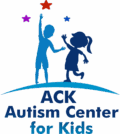The VML Method (Verbal Behavior Milestones Assessment and Placement Program) is an assessment and intervention framework rooted in the principles of Applied Behavior Analysis (ABA) and Verbal Behavior (VB). It was developed by Dr. Sundberg and Dr. Partington as a tool to assess and guide the development of language and communication skills in individuals with autism and other language delays.
The VML Method focuses on teaching language and communication as a functional tool for individuals to express their wants, needs, and thoughts effectively. It emphasizes the analysis of language in terms of its functions, such as manding (requesting), tacting (labeling), and intraverbals (conversational responses), rather than solely focusing on form or imitation of words.

The VML Method includes several key components:
- Assessment: The VML Method utilizes an assessment tool called the VB-MAPP (Verbal Behavior Milestones Assessment and Placement Program). This assessment evaluates an individual’s skills across multiple language and communication domains, including listener responding, vocal imitation, requesting, labeling, and social skills. The results help identify the individual’s current language abilities, pinpoint areas for intervention, and guide the development of individualized treatment goals.
- Individualized Treatment: Based on the assessment results, the VML Method supports the development of individualized treatment plans. Intervention strategies are tailored to address the specific language deficits and communication goals of each individual. The focus is on building functional language skills that allow individuals to effectively communicate their needs and desires.
- Language and Communication Training: The VML Method utilizes teaching techniques derived from the principles of ABA and VB. It emphasizes the use of natural environment teaching, discrete trial training, and incidental teaching to facilitate language and communication development. These techniques involve creating opportunities for language learning within the individual’s natural environment and reinforcing desired communication behaviors.
- Promoting Generalization and Maintenance: The VML Method emphasizes generalization of language skills across people, settings, and materials. It focuses on teaching individuals to use their language skills in various contexts, ensuring that the skills learned in therapy transfer to real-life situations. Maintenance strategies are also incorporated to help individuals retain and continue using their acquired language skills over time.
- Ongoing Assessment and Progress Monitoring: The VML Method emphasizes the importance of ongoing assessment and progress monitoring. Regular data collection allows for the tracking of skill acquisition, identification of areas that may require additional intervention, and modification of treatment plans as needed. It ensures that therapy remains dynamic and responsive to the individual’s changing needs.
The VML Method has been widely used in clinical and educational settings to promote language and communication development in individuals with autism and other language delays. Its focus on functional communication and individualized treatment makes it a valuable tool in helping individuals acquire the necessary skills to effectively communicate and engage with their environment.
Autism Center for kids is the leading provider of VML therapy for kids with autism with 20 years of experience in the field. The therapy is done by Amir Haimove a cognitive development therapist
Discover more from Autism Services and therapy for Kids by counseling
Subscribe to get the latest posts sent to your email.


You must be logged in to post a comment.